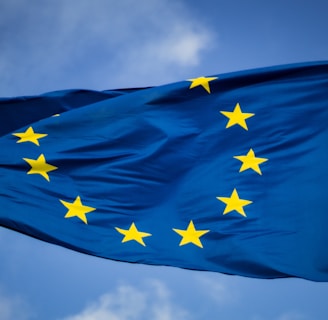The Rise of the Red Berry: Analyzing Cranberry Import Trends in the EU.
EU cranberry imports surged 11.5% in early 2025, reaching 22,862 mt. This "red berry" boom reflects growing health trends and product diversification in the European market.
CRANBERRIESFRESH CRANBERRYCRANBERRYCRANBERRY JUICEDRIED CRANBERRYEU
7/28/20253 min read


The Rise of the Red Berry: Analyzing Cranberry Import Trends in the EU
The European Union's appetite for cranberries is growing at an impressive rate, signaling a significant shift in consumer preferences and market dynamics. Recent data from the first half of 2025 reveals a substantial increase in EU cranberry imports, with volume surging by 11.5% compared to the same period last year. This notable rise highlights the "red berry's" increasing prominence within the European market, driven by a confluence of health-conscious trends, product diversification, and evolving trade relationships.
From January 1 to July 6, 2025, the EU imported 22,862 metric tons (mt) of dried cranberries, valued at EUR 83.090 million. This represents not only an 11.5% increase in volume but also a 12.0% increase in value, indicating a robust and expanding market.
Key Drivers Behind the Surge
Several factors are contributing to this accelerated growth:
* Health and Wellness Trends: Cranberries are widely recognized for their health benefits, particularly their role in preventing urinary tract infections due to their high concentration of proanthocyanidins. Beyond this, they are rich in antioxidants, vitamins, and fiber, aligning perfectly with the growing consumer demand for natural, functional foods. As European consumers become more health-conscious, they are increasingly incorporating cranberries into their diets, not just for specific ailments but as part of a general wellness regimen.
* Product Diversification: The cranberry's versatility has led to its inclusion in a wider array of products beyond traditional juices and dried snacks. Cranberries are now found in yogurts, cereals, baked goods, sauces, and even savory dishes. The innovation in product development makes cranberries more accessible and appealing to a broader consumer base, driving overall demand.
* Shifting Sourcing Dynamics: While the United States has historically been a major supplier, the first half of 2025 has seen dynamic shifts in import origins. Imports from the USA rose by 6.8% to 11,366 mt, demonstrating continued strong demand. However, imports from Canada saw an even more significant increase of 22.8% to 9,770 mt, indicating Canada's growing market share. Conversely, shipments from Chile decreased by 8.4% to 1,647 mt. These shifts underscore the evolving global supply chain and the competitiveness among major cranberry producers.
* Strategic Importing Hubs: Within the EU, certain countries are leading the charge in cranberry imports. The Netherlands, a significant entry point for many agricultural products, saw its imports rise by 11.9% to 15,190 mt. Germany experienced an even more substantial jump, with imports increasing by 40.8% to 2,070 mt, reflecting a burgeoning market in Central Europe. Poland also showed positive growth, with imports up 7.3% to 1,470 mt. These countries serve as key distribution hubs, facilitating the wider spread of cranberries across the continent.
* Favorable Market Conditions: Despite some weather challenges in cranberry-producing regions, such as frequent rainfall and limited sunshine in May and June 2025, overall yield expectations remain moderate. The industry's resilience and capacity to manage supply chain logistics contribute to consistent availability, meeting the rising demand.
The Road Ahead
The upward trajectory of EU cranberry imports is likely to continue in the coming years. The ongoing emphasis on health and natural ingredients, coupled with continuous product innovation, will sustain consumer interest. As suppliers adapt to market demands and explore new trade avenues, the "red berry" is poised to solidify its position as a staple in European households and food industries.
However, potential challenges such as climate variability impacting harvests and evolving trade tariffs could influence future trends. For instance, discussions around EU tariffs on US dried cranberries, though currently suspended until August 6, 2025, could introduce volatility. Nevertheless, the robust growth witnessed in the first half of 2025 paints a clear picture of a thriving market, with the EU firmly embracing the nutritional and culinary appeal of cranberries. The rise of the red berry is not just a passing trend; it's a testament to the fruit's enduring appeal and its growing importance in the European diet.
Cranberry Expert
The no.1 cranberry producer in the world
© 2024. All rights reserved.
